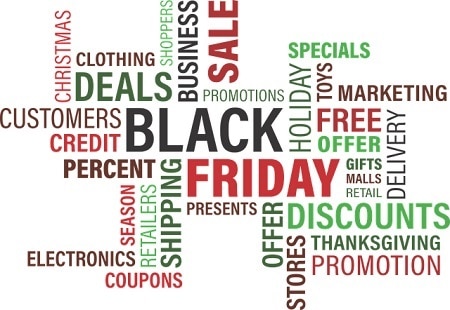
A new global study of 111,899 consumers across 45 countries conducted by GlobalWebIndex, reveals that that 49% of UK consumers are now actively purchasing through social platforms.
Ahead of Black Friday/Cyber Monday, UK social shopping is actually amplified by 66%.
Further findings:
- Most popular social platform for consumer purchases = Facebook. 39% of UK respondents admit to purchasing products through it.
- Just 13% of UK and US internet users are planning to buy products in-store and 12% opting for click and collect – this Black Friday/Cyber Monday.
- Most popular platform for purchasing after seeing a Black Friday/ Cyber Monday advert is Instagram – with 25% of UK consumers stating better previews of items as the core reason
- Overall, 27% of UK and US consumers trust social platforms to handle the payment process in the same way as a brand or retailer
- Only 17% of consumers feel they will do “most” of their Christmas shopping during Black Friday/Cyber Monday
This rise is being driven by innovations in product search functionalities across platforms like Instagram, which recently introduced product tags to support native product discovery.
Today, 42% of global internet users predominantly conduct research about brands, products and services through social networks, putting them just 10-percentage points behind search engines.
Taking this a step further to consider actual purchase habits, another study conducted by GlobalWebIndex of 3,500 consumers in the UK and US finds 49% of UK and 53% of US consumers are now converting through social platforms. The most popular platform is Facebook, through which 39% of UK respondents stated they have made a purchase.
The same research highlights that when it comes to Black Friday and Cyber Monday campaigns, social shopping tendencies are amplified by as much as 66% in the UK, with only a quarter of respondents able to say they wouldn’t purchase through social media after seeing a sales offer during the discount weekend.
A greater product experience
One of the most popular platforms for purchasing after seeing a Black Friday or Cyber Monday advert is Instagram. A quarter of UK respondents identify a better preview of the product as a core reason for their choice of platform to buy through. This rises to 31% in the US.
A richer experience is also delivered through users’ ability to see the latest trends and influencer posts through a social network (20%) and the fact they can see what friends have engaged with or purchased (20%). These reasons rated higher than any discrepancy in the price of products between social and other platforms.
Crucially social media platforms have reached a point of maturity with consumers. 27% of UK and US consumers agreed they could trust the platform to handle the payment process in much the same way as a brand or retailer and this proved a vital factor in their decision.
Rise of mobile payments
According to GlobalWebIndex data, on a global level mobile payments are steadily increasing each quarter and have grown by 14.7% since 2015. These figures are likely to continue growing as mobiles increasingly become the most important device for internet users worldwide.
With the subsequent rise of social and mobile payments, the high street could be in for a tough winter sales period. The study finds just 13% of UK and US internet users are planning to buy products in-store and 12% opting for click and collect.
Senior trends analyst at GlobalWebIndex, Chase Buckle, comments “It’s not all doom and gloom for the high street, brands and retailers with physical outlets should be orientating the shopper journey in-store around experiences, rather than pure sales. This will encourage that all-important loyalty online in the run-up to Christmas.”
Marathon marketing
Advertisers could be forgiven for investing a large swathe of the marketing budget to leap ahead of the competition ahead of Black Friday – sure enough, a quarter of UK shoppers expect to have spent over £250 by the close of Cyber Monday.
Despite this, just 17% of consumers feel they will be able to do ‘most’ of their christmas shopping during the Black Friday weekend. Why? Despite the fact 7 in 10 wish more brands and retailers offered deals, technology is still the dominant category over fashion, home and cosmetics products.
Chase Buckle concludes, “Black Friday and Cyber Monday continue to serve a purpose for consumers at an international level. However, marketers need to remember that this winter period is a marathon and not a sprint. It’s clear social media channels need to be taken into consideration, but brands must think carefully about how to allocate spend throughout the whole winter sales period.”
Amount expected to be spent by consumers ahead of 2018 Black Friday/Cyber Monday sales based on household income
| Household income before tax or any other deductions: | |||||
| Less than £10,000 | £10,001 to £20,000 | £20,001 to £40,000 | £40,001 to £60,000 | £60,001 + | |
| £0 – £50 | 24% | 13% | 10% | 6% | 4% |
| £51 – £250 | 31% | 38% | 34% | 30% | 24% |
| £251 – £1,000 | 12% | 13% | 22% | 24% | 21% |
| £1,001 – £2,000 + | 3% | 2% | 4% | 12% | 36% |
(% represents those internet users who declared their income bracket in survey)
Methodology
Pollpass respondents were 2,000 US consumers and 1,500 UK consumers aged 16-64.
GlobalWebIndex data sample includes the following countries: Argentina, Australia, Austria, Belgium, Brazil, Canada, China, Egypt, France, Germany, Ghana, Hong Kong, India, Indonesia, Ireland, Italy, Japan, Kenya, Malaysia, Mexico, Morocco, Netherlands, New Zealand, Nigeria, Philippines, Poland, Portugal, Russia, Saudi Arabia, Singapore, South Africa, South Korea, Spain, Sweden, Switzerland, Taiwan, Thailand, Turkey, UAE, UK, USA, Vietnam.
